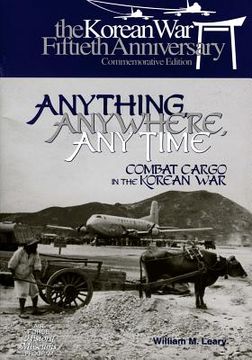Synopsis "Anything, Anywhere, Any Time: Combat Cargo in the Korean War (in English)"
On June 25, 1950, North Korean troops, supported by Soviet-supplied tanks and artillery, advanced across the 38th parallel, routing the lightly armed South Koreans. The immediate tasks facing General of the Army Douglas MacArthur's Far East Command and its air component, the Far East Air Forces, were to provide equipment for the embattled South Koreans and to evacuate the American noncombatants caught in the path of the Communist offensive. Fighters and bombers of the Far East Air Forces contributed to the evacuation by protecting the ships and aircraft carrying the refugees to Japan. While covering the evacuation, 1st Lt. William G. Hudson, the pilot of an F-82 Twin Mustang, scored the first aerial victory of the Korean War by shooting down a Soviet-built fighter.The Korean War consisted of four distinct phases. Initially, the Communist army advanced against increasing resistance as it forced the United Nations defenders into the Pusan perimeter in the most southeastern part of South Korea. In September, however, the second phase began when the North Koreans suffered a complete reversal of fortune when the UN forces landed at Inchon, far beyond the battle line; burst from the Pusan perimeter; shattered the North Korean Army; and pursued its remnants northward. The third phase began when China intervened in force in November 1950, surprising the scattered UN armies as they approached North Korea's northern border and driving them back to the vicinity of the 38th parallel. Finally, the fourth phase was a stalemate, during which neither side would risk vast casualties in an attempt to gain a complete victory. Truce talks began in July 1951, but the fighting continued until July 1953, when the negotiations at last bore fruit and the conflict ended in a cease-fire agreement.

